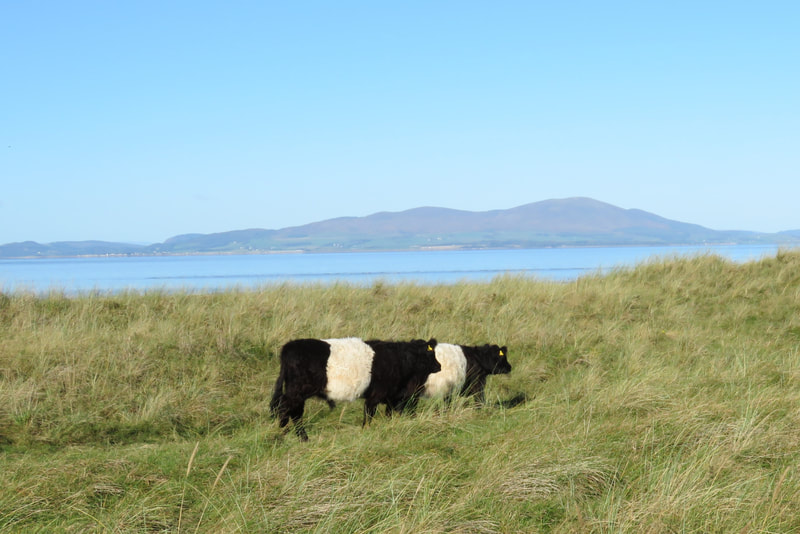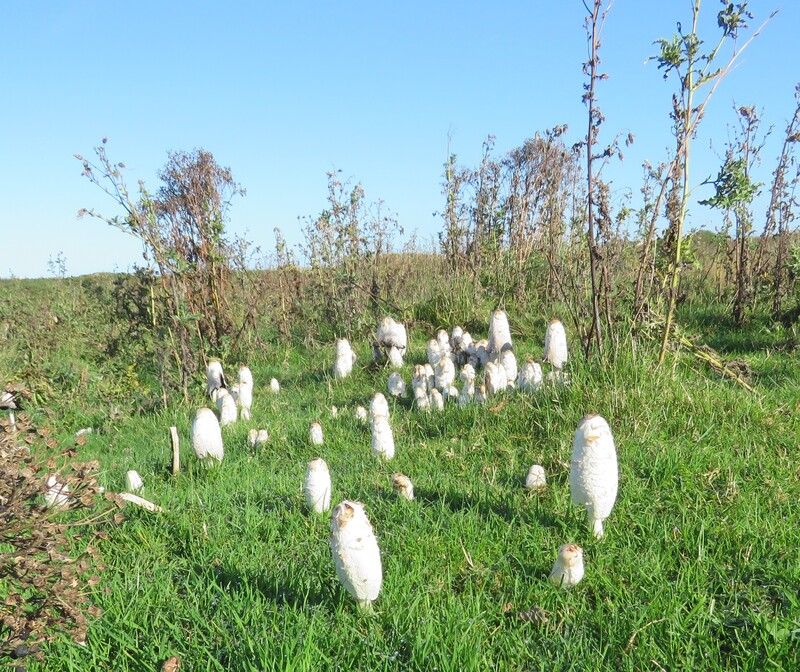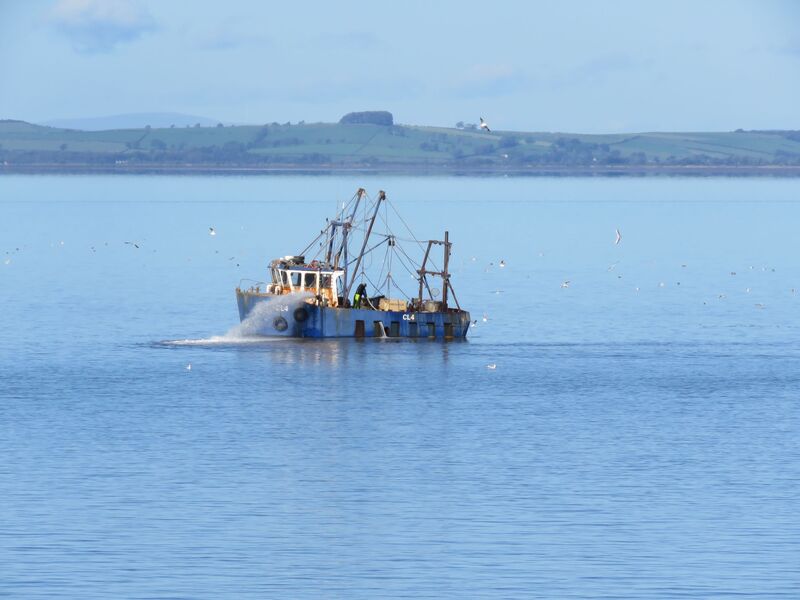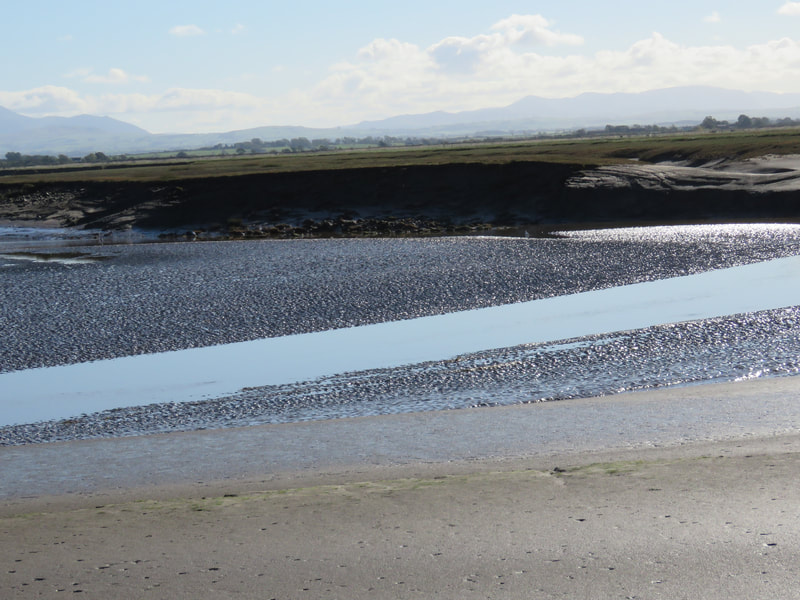 Alavna Roman Fort, 1147 miles from Rome
Alavna Roman Fort, 1147 miles from Rome Solway signposts flag-up history. Yesterday, we visited the museum at Alavna Roman Fort, north of Maryport, 1147 miles from Rome. Although Spanish legionaries stationed here might have yearned to know how far they were from home.
The RSPB reserve of Caerlaverock is almost opposite SIlloth with its fishing port on the English shore. Borders do not exist for barnacle geese flying in from Svalbard to overwinter, or for waders feeding on the Solway mud flats and salt marsh. A leisurely interlude on the promenade at SIlloth, looking across the Solway to Criffel, watching an aura of gulls about fishing boats coming into the harbour and spouting arcs of water as fishermen clean the bilges. Redshank are calling and a flock of turnstone flies in to forage.
For the Romans, Hadrian’s Wall was the northern frontier of their Empire, extending from Berwick to Carlisle and along the Solway shore to Maryport - coastal defences against incursion from the sea. Nowadays, there are coastal defence plans against the sea itself when high tides flood over the salt marsh.
From Skinburness, a sea dyke borders Calvo Marsh which is riddled with creeks flowing out to mud flats and sands of Moricambe. Here the Cistercians of Holme Cultram Abbey grazed their sheep, had salt pans and, at Salt Coates, kept salt for preserving fish caught in the estuary. King Edward I of England stayed at the abbey the night before he died out on Burgh Marsh and his body was taken to the Church of St Michael at Burgh by Sands. Burgh Marsh where the River Eden debouches into the estuary of the Solway.
Holme Cultram Abbey is a Cistercians foundation where we read of the long conflict between the English King and the Scots whose king is Robert the Bruce.
‘Did you know about this?’ they ask. No one told us at school, we discovered it six months ago. And they didn’t tell us about the Romans!’ The women are indignant. This is their inheritance. Hadrian's Wall is on their doorstep and it's much more than local history.
Some stories are not told, or they’re told selectively. I shall not tell the most lively part of this chance encounter on a return from a rather gloomy monument to Edward l. Out of nowhere came this question of the histories that are given to us at school, and those that are neglected. And what we choose to make of the history all around us.
King Edward I, Edward Longshanks, The Hammer of the Scots. That's how the king appears in a statue at Burgh by Sands, tall and majestic, sword raised in conquest. His long campaign against the Scots ended here on the Solway marshes in July 1307. He died of dysentery so he'd hardly be hammering the Scots on that day.
Like the women from Carlisle, we’re eager to delve history whilst recognising there’s much we must infer and imagine for ourselves. What do you do when your king dies out on a salt marsh on the Solway estuary? Who are the chroniclers, the witnesses, and how do they choose to tell the story?
When King Edward I died in July 1307 was Cumbria part of England, or Scotland? During his lifetime it was gifted this way and that. In Shakespeare’s ‘Macbeth’ Malcolm is heir to the throne of Scotland.
‘Our eldest, Malcolm, - we name hereafter
The Prince of Cumberland,’
So proclaims Duncan, King of Scotland. Macbeth Act 1. Scene 4.
So, Cumbria is now within the kingdom of Scotland, now England, and back again. The ‘debateable lands ‘ fought over as the border shifts to and fro. Did the Cistercian rule supersede this question of a border between nations and how far were they caught up in the politics of the time?
I love to catch the first faint calls of geese in flight, growing louder as the skeins come closer, illuminated in sunlight high above Holme Cultram Abbey, over the mud flats and the Solway. The salt marsh is grazing commons for cattle, with farmers bidding for stints- a historic system of regulating who may bid for zones on the marsh for grazing. Dusk approaches when I find a flock of barnacle geese on our return to Moricambe.
We question history, the stories that are given to us. We know of the battle of Solway Moss in 1542. But the Solway salt marshes are extensive and various. Where is the site of the battle? Did they choose to fight amongst treacherous channels in the mud-flats? We had neither of us heard of the battle of Haddon Rig which preceded it, possibly because the English were defeated by the Scots.
In spring 2021 we walked part of Hadrian’s wall whilst staying in the North Pennines, so this Solway section of the wall is a reprise. At Maryport, the Roman Fort of Alavna and its museum is well presented and engaging. The museum looks out across the Solway, as Romans on the mile forts must have done.
Tullie House Museum, Carlisle, is excellent on Hadrian's Wall and Roman settlement. On Carlisle besieged and on The Reivers and 'the debateable lands.'
At Holme Cultram Abbey an exhibition about the history of the abbey and the influence of the Cistercians in the area is set out with loving care. Holme Cultram Abbey is a daughter house of Melrose Abbey on the border so once again the question of dominion is raised. We learn history and natural history by accretion, over a long time. I hope those two ladies from Carlisle enjoy discovery as much as we do.
July 1307 Longshanks dies with redshanks
1542 Solway Moss, the curse of kings. Edward Longshanks dies at Burgh Marsh. James V dies on hearing of his defeat at Solway Moss. (of grief, allegedly.)

























 RSS Feed
RSS Feed